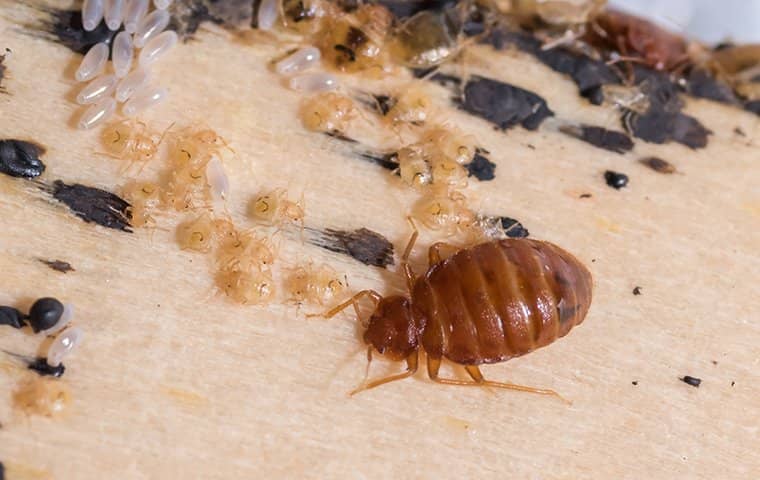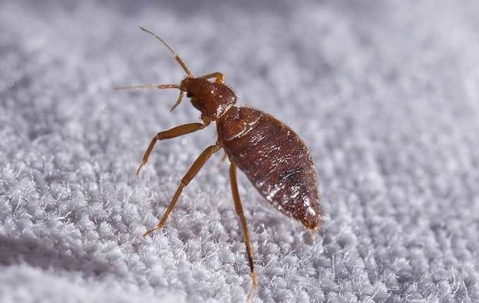Professional Kings Pest Control Cincinnati: Your Trusted Exterminators
Professional Kings Pest Control Cincinnati: Your Trusted Exterminators
Blog Article
Sorts Of Bug Control: Which Technique Is Right for Your Infestation?
When encountered with an insect invasion, the option of a suitable approach for pest control is vital in effectively taking care of the scenario. By checking out the numerous types of insect control methods readily available, individuals can make educated choices tailored to their special circumstances, making certain an extra effective and sustainable result in pest elimination.
Chemical Insect Control
Chemical pest control entails the use of artificial or naturally obtained chemicals to take care of and eradicate pest populations successfully. This method is generally used in farming, forestry, and household settings to fight a large range of pests, including bugs, weeds, and rodents. Using chemical pesticides can offer fast and targeted solutions to pest infestations, making it a popular selection for several people and organizations.
Among the crucial benefits of chemical insect control is its capability to swiftly eliminate bugs, reducing the risk of damages to plants, residential or commercial property, and human health. By using details chemicals that target certain bugs, this technique can efficiently control problems while lessening damage to advantageous organisms and the setting when applied correctly.
Nonetheless, using chemical insect control also increases issues concerning possible unfavorable results on non-target types, water sources, and human wellness. It is vital to follow safety and security guidelines, use chemicals properly, and consider different insect control approaches to reduce these threats and make sure sustainable bug management techniques.
Biological Parasite Control
Organic pest control, also known as biocontrol, uses living organisms to lower and manage pest populations naturally. By using the insect's natural predators or microorganisms, biological insect control provides a sustainable and environmentally friendly solution to pest management.

Mechanical Bug Control
Utilizing manual and physical approaches to handle pest populaces, mechanical pest control supplies an alternate approach that does not depend on the use of living microorganisms or artificial chemicals. This approach includes making use of barriers, catches, or other tools to physically prevent or remove insects. By obstructing pest entrance factors or establishing catches to capture them, mechanical pest control can successfully lower infestations without presenting chemicals right into the environment.
One typical instance of mechanical parasite control is using mesh displays on doors and home windows to stop bugs from getting in buildings. This easy yet efficient approach acts as a physical barrier, keeping bugs out while enabling proper ventilation. Furthermore, tools like mousetraps, fly swatters, and ultrasonic repellents drop under the mechanical pest control category.
While mechanical insect control techniques can be labor-intensive and need normal surveillance and upkeep, they offer a sustainable and eco pleasant remedy for managing insect invasions. By integrating various mechanical methods, homeowner can create an extensive insect control technique that reduces dependence on chemical pesticides.
Physical Pest Control

Some typical physical pest control techniques consist of making use of barriers such as screens or webs to stop insect entrance, traps to record and remove bugs, and hand-picking to physically get rid of pests from plants or frameworks. In addition, strategies like heat therapies can be made use of to control bugs like bed pests by raising the temperature to degrees that are dangerous to the insects.
Physical insect control is specifically useful in integrated bug monitoring (IPM) strategies, where several bug control approaches are combined for efficient bug monitoring while minimizing using chemicals. By using physical parasite control strategies, individuals can efficiently deal with bug problems with marginal ecological impact.
Integrated Pest Administration
When carrying out physical bug control approaches as component of pest management strategies, Integrated Insect Administration (IPM) becomes a comprehensive approach that leverages various methods to successfully manage pest populaces. IPM concentrates on lasting avoidance of pests through a combination of biological, cultural, physical, and chemical devices customized to specific bug concerns. By integrating multiple control strategies, IPM intends to lessen the dangers related to parasites while additionally lowering dependence on chemical remedies.
One key aspect of IPM is the focus on surveillance and analyzing pest populaces to determine one of the most proper control methods. This proactive method permits for very early treatment and targeted methods, bring about extra reliable pest monitoring. In addition, IPM advertises eco-friendly techniques by prioritizing non-chemical control techniques and only using chemicals as a last resource.
Verdict

By utilizing the insect's natural predators or virus, organic bug control provides a environmentally friendly and lasting remedy to pest monitoring. - Kings cincinnati pest control
Making use of hands-on and physical methods to manage parasite populations, mechanical insect control offers a different technique that does not rely on the use of living microorganisms or synthetic chemicals.An effective technique to managing pest populaces without relying on chemical or organic techniques involves the usage of physical insect control methods.When carrying out physical bug control methods as component of bug management strategies, Integrated Parasite Management (IPM) arises as a detailed approach that leverages various methods to efficiently control pest populaces. Chemical insect control entails the use of chemicals, biological Go Here pest control utilizes all-natural predators, mechanical bug control involves physical barriers, physical parasite control consists of trapping or getting rid of insects, and incorporated bug administration incorporates numerous techniques for an all natural technique to pest control.
Report this page